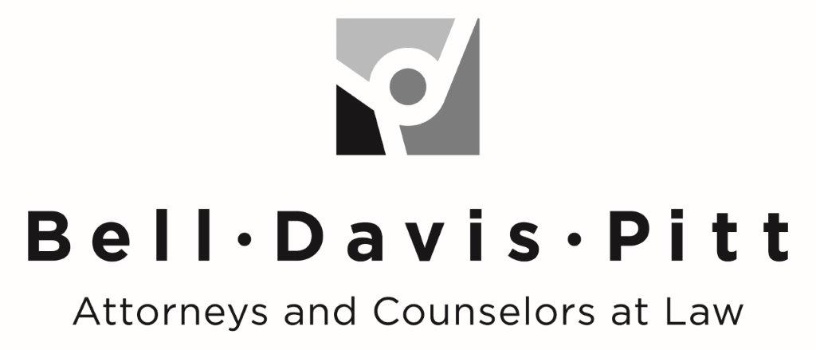It is a fact of life that we are all going to die. And when we die, we are gone forever. However, the property we owned remains, as do our families and friends. We cannot avoid death, but we can plan for it. All of the property we own at our death comprises our “estate.” In essence, an estate plan is a set of actions we can take during our lives in anticipation of our inevitable deaths and the estates we will leave behind.
More specifically, an estate plan is a set of legally enforceable documents that protect your assets and set forth your desires following your death. Additionally, a comprehensive estate plan should address certain common situations that can arise during your lifetime, such as becoming incapacitated.
Probate Property v. Non-Probate Property
Different types of property pass by different means. Generally, all assets can be divided into either probate assets or non-probate assets.
Probate property includes all assets owned individually with no beneficiary designations, or as tenants-in-common. These assets will pass to the beneficiaries you name in your Will. The Executor named in the Will is responsible for distributing the probate assets to the beneficiaries named in the Will. Assets transferred into a revocable trust during your lifetime are not probate property. Revocable trust assets are distributed by your trustee pursuant to the terms of your trust upon your death.
Non-probate assets are not controlled by your Will. These assets pass to the beneficiaries you designate, or to a joint owner with a right of survivorship.
Examples of non-probate assets with beneficiary designations include:
- Life insurance policies
- Investment accounts (stocks, bonds, mutual funds, etc.)
- Retirement accounts including IRAs and 401(k)s
These assets are not automatically non-probate assets. A beneficiary other than your estate must be designated to make them non-probate. For this reason, your designations should be carefully reviewed to ensure that these types of accounts have the correct beneficiary designations. Particular attention should be paid to making sure the designation is worded correctly when naming the trustee of any trust.
Thinking Twice about Beneficiary Designations for Non-Probate Assets
Beneficiary designations are a convenient, but sometimes dangerous estate planning tool. They have the benefit of being easy to set up, but you should be careful to make sure your designations work in conjunction with the rest of your estate plan.
For example, people with minor children often choose to include provisions in their Will requiring assets passing to their minor children to be held in trust until the child reaches a certain age. This is a smart provision because it simultaneously avoids the need to appoint a guardian to receive the assets on behalf of the minor child and also allows the parent to control when and how the child will receive the assets.
However, it’s easy for a parent to name a child as a beneficiary of a life insurance policy, for example. In this case, if the parent dies while the child is a minor, the proceeds of the life insurance policy pass directly to the child notwithstanding the trust provisions in the Will (remember life insurance is non-probate). A minor child cannot legally receive property, so a guardian must be appointed and bonded by the court. This is a time-consuming and expensive process that the deceased parent most likely did not see coming. The parent should have named the trustee of the child’s trust as the beneficiary to avoid this problem and allow the life insurance policy to work in conjunction with the Will.
Making Sure the Components of Your Estate Plan Work Together
An estate plan should account for both probate and non-probate assets. Just as a Will should be drafted carefully, beneficiary designations and asset titling should be carefully reviewed to ensure that the designations reflect your desires.
Additionally, non-probate assets should be reviewed to make sure your estate plan as a whole works effectively. For example, if the bulk of your assets are held in retirement accounts with beneficiary designations and jointly owned property, there may not be enough probate assets to cover specific bequests made in your Will or to cover the expenses arising from the administration of your estate.
Managing Common End-of-Life Scenarios
An estate plan should also address the common situation where someone is incapacitated in a hospital bed or is suffering from Alzheimer’s disease or other cognitive impairment. In these situations, the afflicted person is unable to manage daily finances and make healthcare decisions.
Properly drafted Powers of Attorney give you the ability to name a trusted individual as your agent. Your agent will handle your finances and make healthcare decisions on your behalf.
A Durable Power of Attorney gives your agent authority to access your bank accounts and pay your bills. A Healthcare Power of Attorney gives the agent authority to make healthcare decisions on your behalf. The same person does not have to be both your financial agent and healthcare agent. The exact terms included in a Power of Attorney document vary.
While it is important to provide guidance to your healthcare agent, you should be careful not to unintentionally restrict their decision-making in a scenario that you did not foresee. To avoid this kind of problem, you should consult with an estate planning attorney to discuss the terms and to determine how much authority to give your agents.
Estate plans are unique to every individual. This article hits on some of the general principles and underlying rules relating to the transfer of property at death. How these rules (and many, many others not mentioned here) should be used to create an estate plan varies greatly between each person. A trusts and estates attorney at Bell, Davis & Pitt will be happy to work with you to develop and execute a comprehensive estate plan tailored to meet your needs.






0 Comments